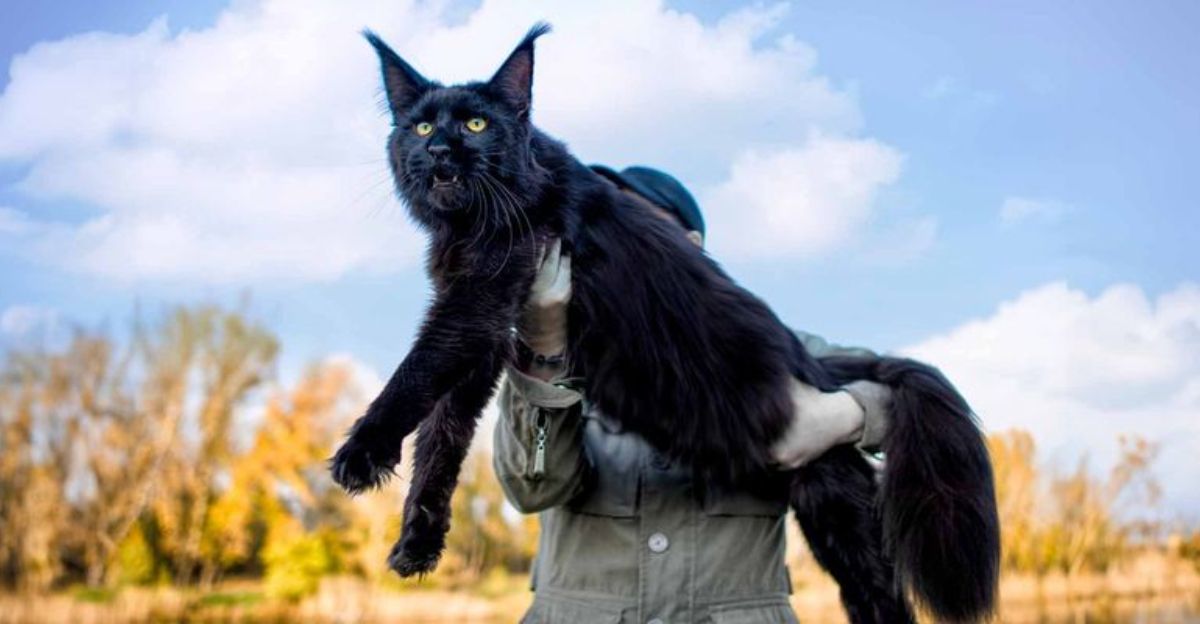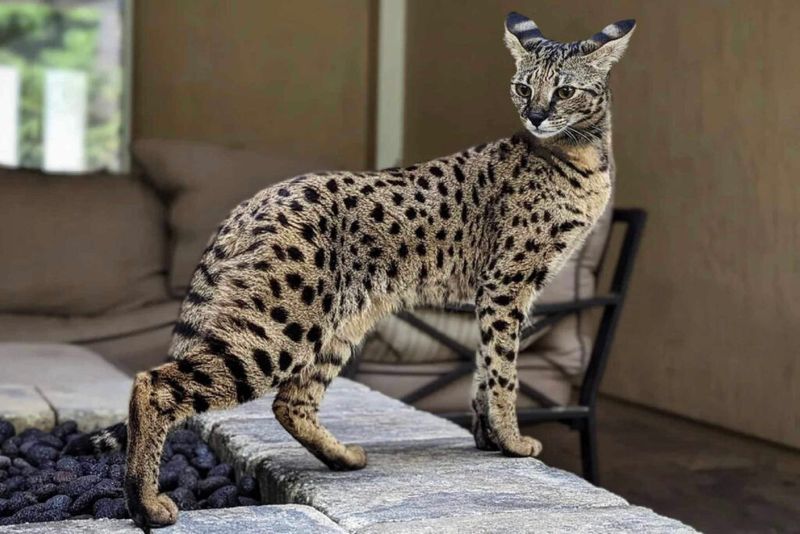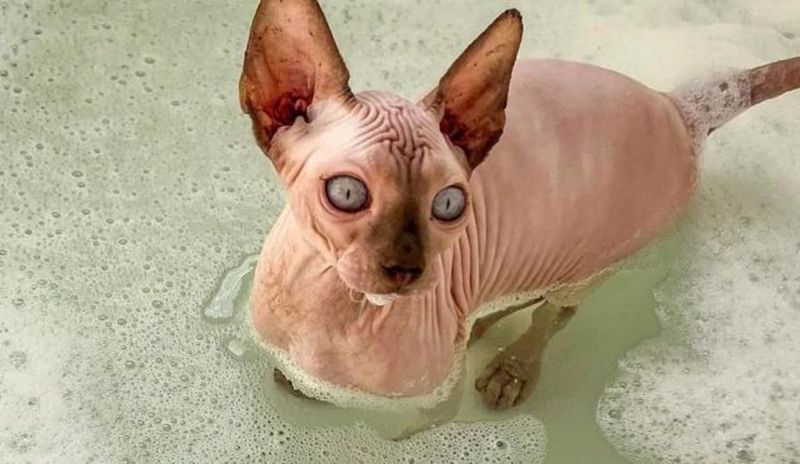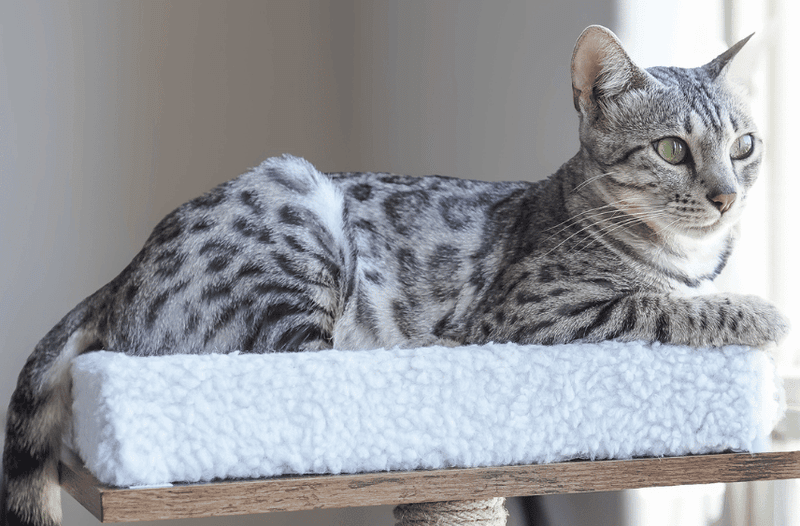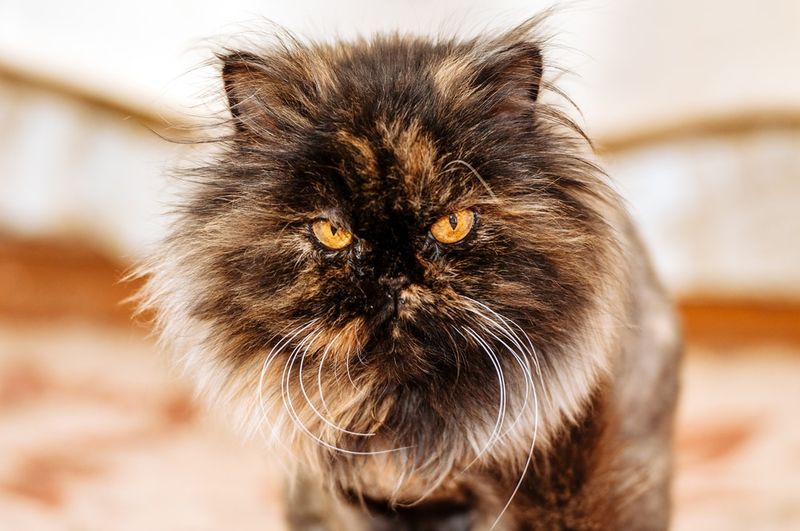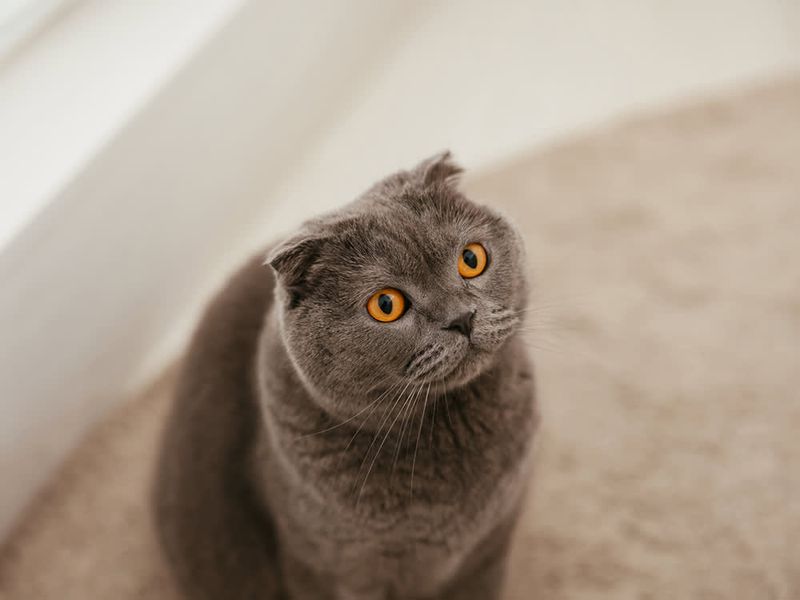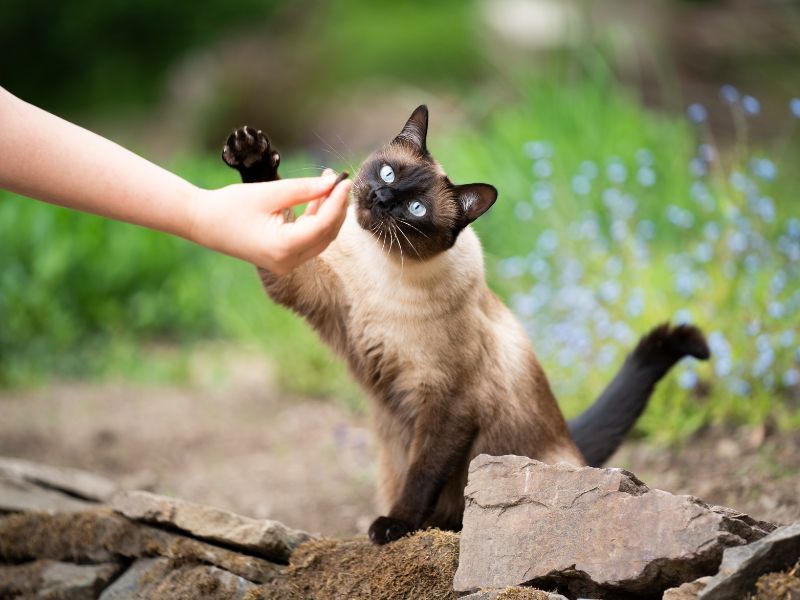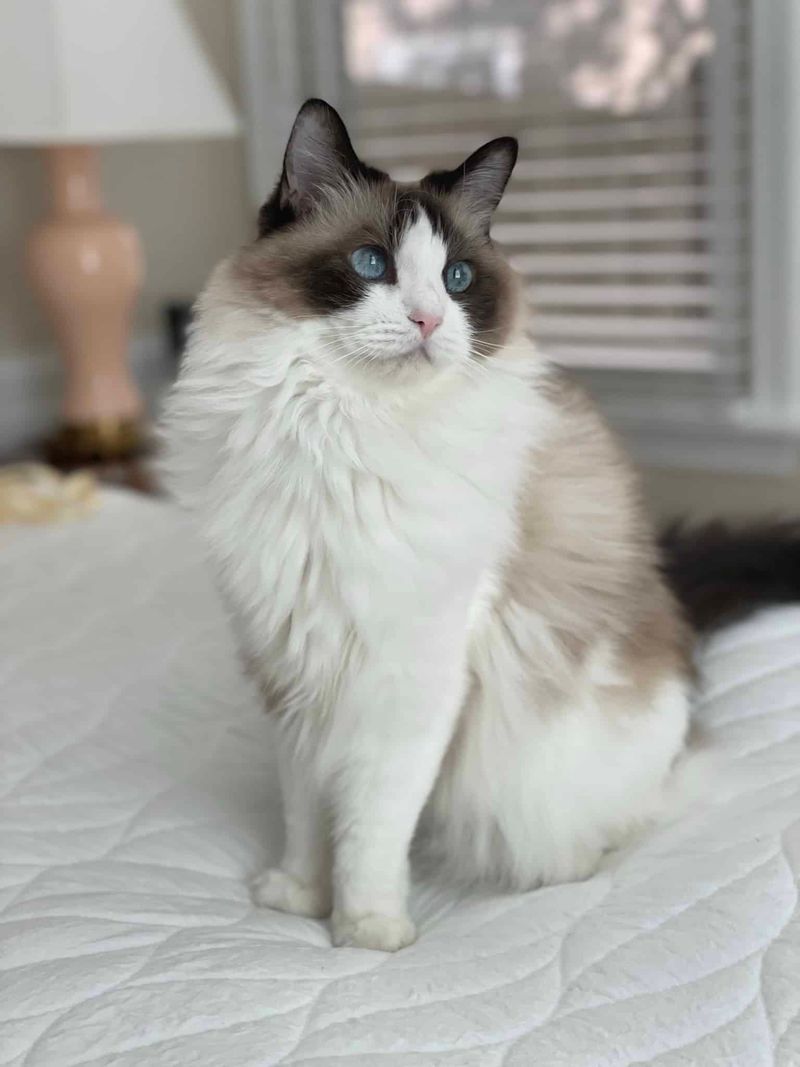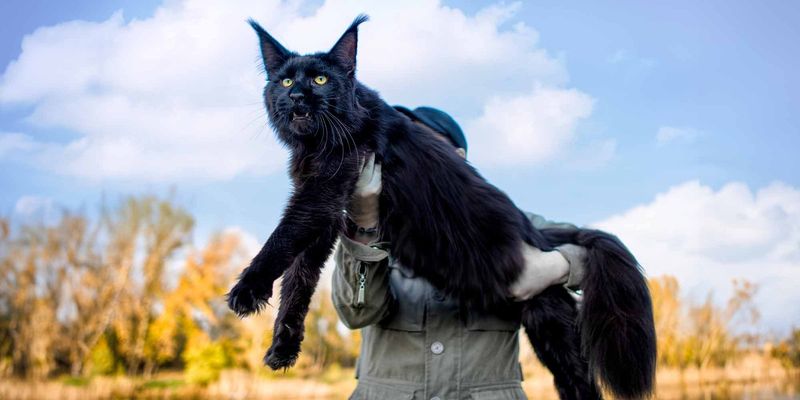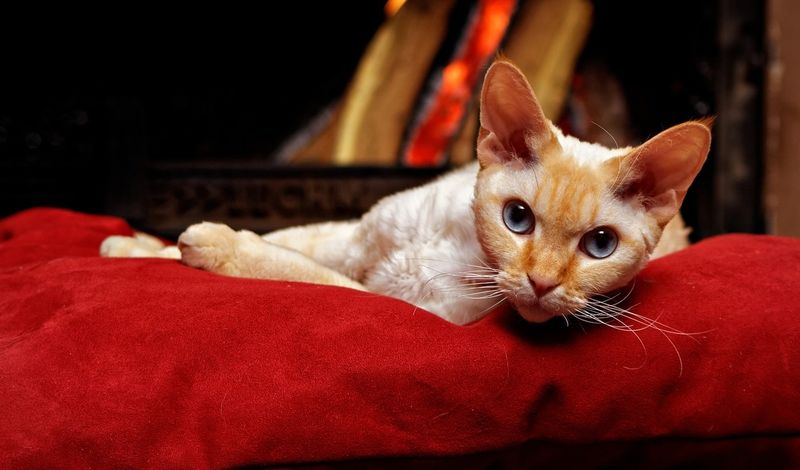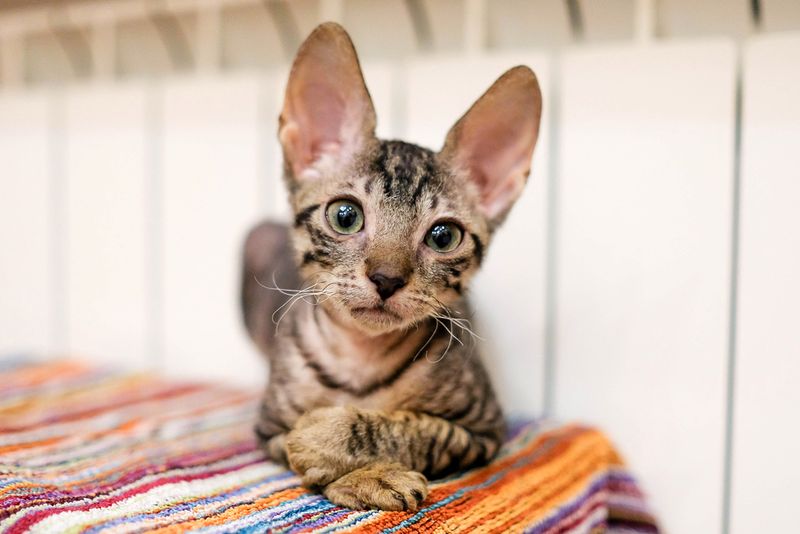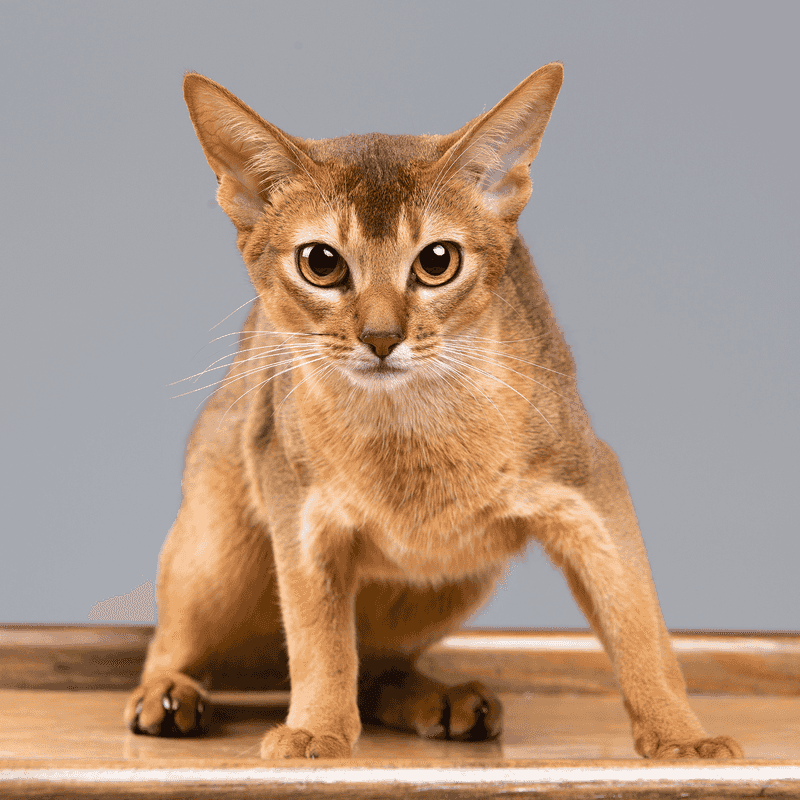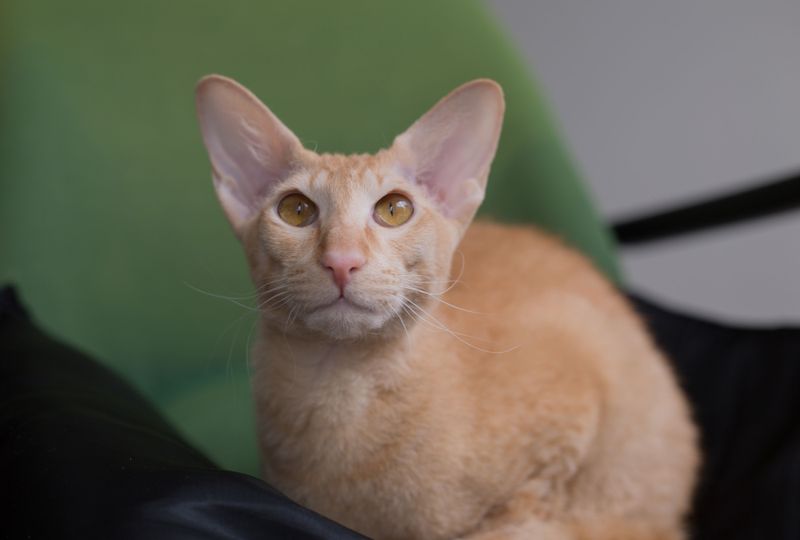📖 Table of Content:
Choosing a cat is a big decision that affects your life for many years. Not every cat breed fits every household, and some require special care or environments that many people can’t provide. Before you bring home a new feline friend, it’s worth knowing which breeds might clash with your lifestyle, living space, or family situation.
1. Savannah Cat
Savannah cats mix wild African servals with domestic cats, creating an energetic, high-maintenance pet. They need massive amounts of exercise and mental stimulation that typical homes can’t provide.
Their size and strength can be overwhelming – these cats can jump 8 feet high and often weigh 15-20 pounds. They’re also extremely vocal and might not get along with other pets.
Many states and countries have restrictions or outright bans on Savannahs due to their wild heritage. The cost is prohibitive too, with first-generation Savannahs reaching $20,000.
2. Sphynx
Hairless and high-maintenance, Sphynx cats require weekly baths to remove body oils that would normally be absorbed by fur. Their exposed skin makes them extremely vulnerable to sunburn, cold temperatures, and skin conditions.
Regular cleaning of their large ears is necessary to prevent wax buildup and infections. Their high metabolism means they eat significantly more than other cats, increasing your food budget.
Sphynx cats can’t be left alone outdoors and need special clothing in cold weather. They’re also prone to heart conditions and dental issues that lead to expensive vet bills.
3. Bengal
Athletic and restless, Bengals have wild Asian leopard cat ancestors that give them boundless energy. Without proper outlets, they become destructive, climbing curtains, opening cabinets, and knocking items off shelves.
Bengals are notorious for their loud, persistent vocalizations that can sound like a child crying. They’re escape artists who need secure homes – many Bengals have figured out how to open doors and windows.
These intelligent cats get bored easily and require expensive toys, climbing structures, and puzzle feeders. They also have a strong prey drive that makes them incompatible with small pets like hamsters or birds.
4. Persian
Famous for their flat faces, Persians suffer from breathing difficulties due to their brachycephalic structure. This facial anatomy leads to chronic respiratory issues, eye problems, and difficulty eating.
Their luxurious long coat requires daily grooming to prevent painful mats and hairballs. Without proper care, their fur quickly becomes a tangled, unhygienic mess that can cause skin infections.
Persians are prone to polycystic kidney disease, a genetic condition affecting nearly 40% of the breed. They also commonly develop dental problems, tear duct overflow, and heat sensitivity that requires air conditioning year-round.
5. Scottish Fold
Scottish Folds have a genetic mutation that affects cartilage development, giving them their distinctive folded ears. This same mutation causes painful joint problems and arthritis even in young cats.
Ethical concerns surround this breed since their signature trait directly connects to health problems. Many veterinarians and animal welfare organizations oppose breeding Scottish Folds due to the inevitable suffering.
These cats often need pain medication throughout their lives and specialized care for mobility issues. The cartilage problems can also affect their tail and legs, leading to abnormal posture and movement that worsens with age.
6. Siamese
With powerful and vocal personalities, Siamese cats can overwhelm owners who aren’t prepared. They use loud, raspy meows day and night to get noticed.
These intelligent cats form intense bonds with their people and suffer severe separation anxiety when left alone. They’ll express their distress through destructive behavior and excessive vocalization that neighbors can hear.
Siamese are prone to compulsive behaviors like wool-sucking, excessive grooming, and pica (eating non-food items). They also have breed-specific health problems including progressive retinal atrophy, which causes blindness, and amyloidosis, a liver condition.
7. Ragdoll
Unlike most cats, Ragdolls lack strong survival instincts. Their gentle temperament prevents them from defending themselves or escaping danger, making outdoor exposure potentially unsafe.
Their semi-long fur mats easily without regular grooming, creating painful skin conditions. Ragdolls are large cats weighing up to 20 pounds, requiring more space and stronger furniture than many homes offer.
This breed has serious genetic health concerns including hypertrophic cardiomyopathy (heart disease) and polycystic kidney disease. Their trusting nature also makes them targets for theft, as they’re one of the most expensive cat breeds.
8. Maine Coon
Maine Coons are giants among domestic cats, often weighing 15-25 pounds with bodies up to 40 inches long. Their size means they need more space, larger litter boxes, and sturdier furniture than most homes provide.
Their thick, water-resistant coat requires extensive grooming to prevent mats. Maine Coons shed heavily, covering furniture and clothing with hair despite regular brushing.
These cats face serious genetic health problems, particularly hypertrophic cardiomyopathy (heart disease) and hip dysplasia. Their large size also makes them prone to obesity when indoor living limits their activity, leading to diabetes and joint problems.
9. Devon Rex
The delicate, sparse fur of Devon Rex cats offers little insulation. They’re sensitive to cold and sunburn easily, making sweaters and careful sun monitoring necessary.
The oils that would normally distribute through fur instead build up on their skin, requiring weekly baths. They’re also prone to hair loss that can progress to complete baldness as they age.
Devon Rex cats have an unusually high metabolism that requires more food than typical cats, yet they’re prone to obesity from their love of eating. Their large ears collect dirt quickly and need regular cleaning to prevent infections.
10. Cornish Rex
Cornish Rex cats have only down hair instead of normal three-layered cat fur, making them extremely temperature sensitive. They seek heat constantly, climbing on dangerous surfaces like stovetops and getting under blankets where they risk suffocation.
Their skin produces excess oil that requires weekly bathing to prevent greasiness and odor. Without proper care, they develop skin conditions and acne-like breakouts that require veterinary treatment.
Cornish Rex cats are hyperactive and need constant stimulation. They’re notorious for climbing to the highest points in homes, knocking over fragile items, and getting into places other cats can’t reach.
11. Abyssinian
Known for their high energy, Abyssinians require regular, engaging play to avoid boredom. If not properly stimulated, they may develop anxious behaviors such as excessive grooming and scratching furniture.
These cats form intense bonds with their people and suffer severe separation anxiety when left alone. They don’t do well in quiet households or with owners who work long hours.
Abyssinians are prone to several genetic health problems including progressive retinal atrophy (causing blindness), pyruvate kinase deficiency (a blood disorder), and renal amyloidosis (kidney disease). They’re also escape artists who will dash through open doors.
12. Peterbald
Peterbald cats range from completely hairless to having a fine peach-fuzz coat, but all require intensive skin care. Their exposed skin collects dirt quickly and needs cleaning with special cat-safe wipes or gentle baths several times weekly.
They lack whiskers and eyebrows that normal cats use for spatial awareness and communication. This sensory deficit means they’re more prone to injuries from misjudging distances and spaces.
Peterbalds have an extremely fast metabolism, requiring more food than typical cats. They need constant temperature control – too cold and they can develop hypothermia, too hot and they sunburn severely.
